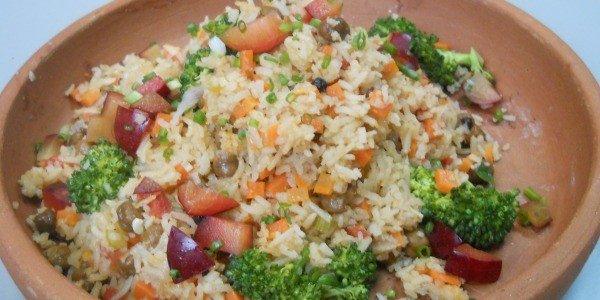Japanese diet for weight loss

“The Japanese diet is the iPod of diets” – says Naomi Moriyama, co-author of the book “Japanese Women Don’t Get Old and Fat: Secrets of My Mother’s Tokyo Kitchen”.
Japanese cuisine – she says – concentrates the incredible energy of food into compact and pleasantly large portions.
Actually, you don’t have to cook exactly Japanese style at all. It is quite enough to eat more fish, vegetables and fruits, serve smaller portions, eat consciously and more slowly, consume healthy products more often (tofu, rice).
First the benefits. Because the Japanese diet is so healthy, Japanese men and women are healthier and live longer than anyone else on the planet.
Not only does the average life expectancy reach 86 years for women and 79 for men (in the US it is 80 years for women and 76 for men), but they also live better lives, in better health and with more good physical capabilities even if they are 75 years old.
Most importantly for health, the Japanese have #1 in the developed world low rates of obesity in the population (only about 3% of Japanese are obese, compared to about 11% in the French and 32% of Americans).
And if you think it’s all about genes – no, you’re wrong. The Japanese who acquire the Western way of eating quickly start to generate kilos and accumulate fat.
Eat with your eyes – the magic of Japanese cuisine lies in the combination of filling foods with few calories and smaller portions.
Japanese cuisine, with its aesthetics and appearance, makes us eat slowly, less and enjoy the beauty of food.
Eating at a slower pace, in turn, allows you to feel full sooner and eat less food.
Moriyama says the Japanese eat an average of 25 percent fewer calories per day than Americans, and that partly explains the longer life expectancy.
If you cut calories by 8% a day while increasing your activity, it can increase life expectancy, says a study from the Florida College of Medicine.
Cutting calories doesn’t have to be difficult and painful. You just need to replace higher calorie foods (chips, chocolate, cookies) with low calorie foods (soups, fruits, vegetables).
Pennsylvania State University research shows that if your portion is 25% smaller you will take in 30% fewer calories. So if you apply this rule, you can end the day with about 800 calories less.
In Japan, portions are served in separate small bowls instead of one large plate. Diners have the chance to choose from a larger number of foods in a smaller quantity.
It has been proven that if we serve food on large plates we will eat it regardless of whether we were that hungry or not, ending the day with a calorie surplus.



